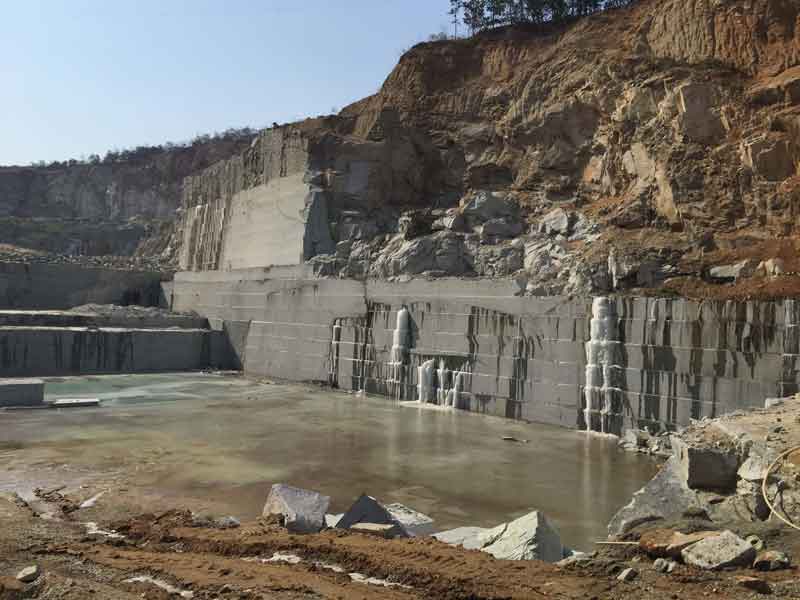Opening All-natural Treasures: Granite Quarries in South Africa Introduced
Opening All-natural Treasures: Granite Quarries in South Africa Introduced
Blog Article
Unveiling the Mysteries of Granite Quarrying: Where Stamina and Style Meet
The world of granite quarrying is a realm where the raw stamina of nature assembles with human virtuosity to develop structures that stand the test of time with an air of beauty. From the depths of quarries to the careful sprucing up in workshops, the procedure of changing granite into architectural marvels is a complex dance of custom and advancement. As we peer right into the midsts of this old craft, we start to reveal the surprise intricacies that shape the very essence of our built environment.
The Origins of Granite Quarrying
In the annals of building background, the beginnings of granite quarrying are shrouded in a tapestry of old workmanship and geological wonders. Going back to ancient Egypt and Mesopotamia, the removal of granite from quarries marked the beginning of a journey that would ultimately bring about the production of some of the world's most legendary frameworks.
Granite quarrying's roots can be mapped to the competent artisans that acknowledged the rock's durability and visual allure. Through a mix of primitive devices and sheer decision, these early quarry workers uncovered granite blocks that would end up being the building blocks of worlds.
As worlds developed, so did the techniques of quarrying granite. The Romans, renowned for their design expertise, developed advanced approaches for drawing out granite to construct monuments, holy places, and roads that stood the examination of time.
The heritage of these ancient quarrying practices proceeds to shape modern style, with granite staying a symbol of toughness and sophistication in building projects around the world. (granite quarries in south africa)
Tools of the Quarrying Profession
The development of granite quarrying techniques from old civilizations to modern-day times highlights the important role played by the devices of the quarrying trade in forming the market's techniques. In ancient times, quarrying devices were fundamental, frequently being composed of blades, hammers, and wedges made from products like bronze or iron. These tools called for considerable workforce and time to extract granite obstructs from quarries.

Furthermore, the introduction of pneumatic devices and high-powered equipment has actually substantially minimized the physical labor needed in quarrying operations, enhancing worker safety and security and performance. As the quarrying market continues to innovate, the devices of the profession stay at the leading edge of driving progress and forming the future of granite removal.
Drawing Out Blocks of Granite
Utilizing accuracy machinery and progressed techniques, the removal of granite obstructs from quarries has come to be an advanced procedure in the contemporary quarrying sector. Managed blowing up techniques are after that employed to damage apart the granite into workable areas.

Sprucing Up and Ending Up Methods
To accomplish a remarkable surface on granite blocks, proficient craftsmens utilize a a knockout post collection of careful polishing and ending up techniques. After the first extraction and forming processes, the granite obstructs go through an extensive polishing phase to boost their natural elegance and toughness. One common technique used in polishing granite is ruby abrasion, where industrial diamonds are made use of to grind and polish the rock to a smooth finish. This process not just creates a shiny surface area but likewise makes certain uniformity in shade and appearance across the granite block.
Along with polishing, completing strategies are related to further refine the granite's appearance. These methods might consist of flaming, sharpening, or cleaning, each offering unique textures and surfaces to fit different visual choices. Flaming, as an example, entails revealing the granite surface area to heats to develop a harsh, distinctive coating, perfect for outdoor applications where slip-resistance is important. Developing, on the other hand, offers a matte finish that is smooth to official statement the touch, ideal for indoor countertops and flooring. By thoroughly selecting and applying these polishing and ending up strategies, craftsmens can change raw granite blocks into beautiful pieces that showcase both toughness and style.

Environmental Effect and Sustainability
With the growing emphasis on environmental consciousness in the sector, granite quarrying practices are progressively looked at for their effect on all-natural sources and long-term sustainability. Additionally, the transportation of granite from quarries to processing facilities generates carbon discharges, even more contributing to environmental deterioration.
To alleviate these effects and make sure sustainability in granite quarrying, sector stakeholders are taking on numerous actions. Applying innovative modern technologies to lower power intake and water use, recovering quarried land for environmental remediation, and promoting responsible sourcing practices are some strategies being used. In addition, qualifications such as the Woodland Stewardship Council (FSC) and the Leadership in Energy and Environmental Design (LEED) aid consumers identify eco-friendly granite products.
Verdict
To conclude, granite quarrying is a procedure that needs specialized devices and methods to remove blocks of granite and polish them to a high degree of finish. While the ecological impact of quarrying can be substantial, efforts are being made to boost sustainability practices in the market. Overall, granite quarrying is a fragile equilibrium between using the stamina and style of this natural rock while minimizing its effect on the click over here now setting.
Report this page